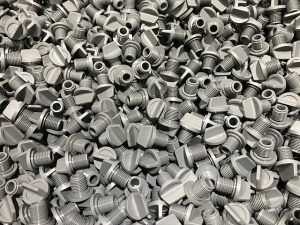
Blow molding is a common manufacturing process that’s used to create hollow objects and parts. It typically involves the use of heated plastic. As the plastic is heated, it becomes more pliable. The heated plastic is then used to form a shell. While all blow molding processes are used to create hollow objects and parts, though, there are different types of blow molding processes, one of which is extrusion. What is extrusion blow molding exactly, and how does it work?
The Basics of Extrusion Blow Molding
Extrusion blow molding is a molding-related manufacturing process that involves forcing heated plastic into a mold and then filling it with air. Like other blow molding processes, it’s used to create hollow objects and parts. Extrusion blow molding is distinguished, however, by its use of extrusion. Only extrusion blow molding uses extrusion to force heated plastic into a mold.
To perform extrusion blow molding, a manufacturing company must first melt raw plastic. Once the plastic has melted, it’s extruded into a tube-like mold known as a parison. Air is then blown into the parison, thereby forcing the heated plastic to spread outwards against the parison’s walls. Finally, the plastic is allowed to cool and harden. After the plastic has cooled, the newly formed shell of the parison is removed, thereby creating a hollow object or part.
Advantages of Extrusion Blow Molding
What benefits does extrusion blow molding offer? For starters, it’s faster than many other blow molding processes. Manufacturing companies can produce hollow objects and parts using extrusion blow molding more quickly than they can with other blow molding processes.
Extrusion blow molding is also cost-effective. The equipment costs associated with extrusion blow molding is less than that of other blow molding processes. Combined with its superior speed, it’s preferred by many manufacturing companies.
Disadvantages of Extrusion Blow Molding
On the other hand, extrusion blow molding is only capable of producing hollow objects and parts. If a manufacturing company needs to produce a solid object or part, it must use a different process. Extrusion blow molding works by pumping air into a parison that’s filled with melted plastic. Therefore, the plastic will only form against the outside of the parison, resulting in the formation of a hollow object or part.
Another disadvantage of extrusion blow molding is that it’s relatively weak. It doesn’t offer the same level of strength as other blow molding processes. The finished hollow objects and parts are relatively weak, making them susceptible to damage.
